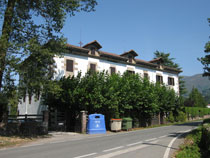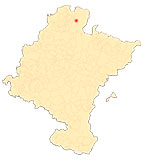Baroque houses and palaces in the Baztan Valley
Introduction
From the end of the 17th century and, above all, throughout the following century, the Baztan valley was the scene of the construction of an important group of stately homes and palaces that became the image and report of the lineage that inhabited them. Throughout that period, many people from Baztan, backed by their nobility and supported by a dense network of countrymen, kinship and friendship, left their homeland to serve the Hispanic monarchy in the high administration of the state and the army, or to go into business, and there were also those who entered the upper echelons of the Church. The law of neighbourhood that governed the valley and the system of sole heir, together with other factors such as demographic pressure, led to this emigration, which mainly affected the second line of the families or those who were not called to the succession of the house.
In their places of destination (the Indies, the Villa y Corte of Madrid, the capital of Navarre itself or cities linked to the New World such as Cádiz or El Puerto de Santa María), these emigrants managed to amass significant fortunes that were totally or partially reinvested in their places of origin and in the family left behind. Their interest focused to a large extent on their native houses, which were now rebuilt from scratch or underwent extensive remodelling, often giving them a stately appearance, although there were also those who opted for the popular architecture of the area with the farmhouse typology. The interest in the house, which is still very much alive today, was not trivial. In Baztan, the house was not only the unifying element of a lineage, but also a great showcase of the success achieved by the members of its lineage, capable of transcending its inhabitants or dwellers over time.
-
GARCÍA GAÍNZA, M. C. and others, Catalog Monumental de Navarra. V*. Merindad de Pamplona, Pamplona, Government of Navarre-Archbishopric of Pamplona-University of Navarre, 1994, pp. 285-422.
-
ANDUEZA UNANUA, P., "La arquitectura señorial de Navarra y el espacio doméstico durante el Antiguo Régimen" in GARCÍA GAINZA, M. C. and FERNÁNDEZ GRACIA, R., Casas señoriales y palacios de Navarra. Cuadernos de la Chair de Patrimonio y Arte navarro, nº 4, Pamplona, 2009, Chair de Patrimonio y Arte navarro, pp. 219-263.
-
ANDUEZA UNANUA, P., "Virreyes, títulos nobiliarios y casas solares en las tierras baztanesasas del Bidasoa" in FERNÁNDEZ GRACIA, R. (ed.), Pulchrum: scripta varia in honorem Mª Concepción García Gainza, Pamplona, Gobierno de Navarra, 2011, pp. 84-95.
-
ANDUEZA UNANUA, P., "La arquitectura civil" in FERNÁNDEZ GRACIA, R. (coord..), El arte del barroco en Navarra, Pamplona, Gobierno de Navarra, 2014, pp. 57-106.












